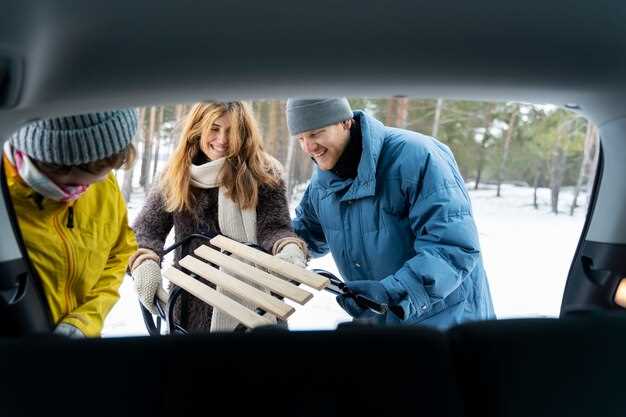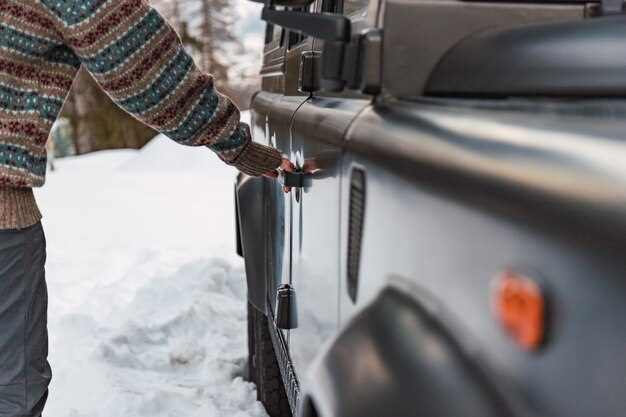
As the winter season approaches, it’s crucial for Jeep owners to focus on winterizing their vehicles to ensure optimal performance and safety in harsh conditions. The cold weather can drastically affect the functionality of your Jeep, making it essential to implement a thorough maintenance routine before the snow starts to fall.
Winterizing your Jeep involves a series of proactive steps that can help prevent potential issues when driving in icy or snowy environments. From checking your battery’s performance to ensuring your tires are equipped for traction, each aspect of your vehicle plays a significant role in winter readiness. Ignoring these tasks could lead to unexpected breakdowns, costly repairs, or even hazardous driving situations.
In this guide, we will explore key maintenance tips specifically tailored for Jeep owners, emphasizing the importance of preparing your vehicle for winter. By taking the time to winterize your Jeep properly, you not only enhance its longevity but also enjoy peace of mind as you traverse through the winter landscape.
Preparing Your Jeep for Cold Weather Driving

Winterizing your Jeep is essential for ensuring safety, performance, and comfort during cold weather driving. Start by checking your battery, as cold temperatures can significantly reduce its efficiency. Ensure it’s fully charged and examine the terminals for corrosion. If your battery is older than three years, consider replacing it to avoid potential breakdowns.
Next, inspect your coolant levels and antifreeze mixture. A 50/50 mix of antifreeze and water is ideal for preventing freezing and overheating. Add antifreeze if necessary, and ensure your radiator and hoses are in good condition to handle the winter demands.
Examine your tires for tread depth and overall condition. Winter tires provide better traction on snow and ice, so consider switching to winter-specific tires if you haven’t already. Ensure they are properly inflated, as tire pressure can drop in colder temperatures. Don’t forget to check your spare tire as well.
Inspect your wiper blades and replace them if they show signs of wear. Good visibility is crucial in winter driving conditions, so fill your windshield washer reservoir with a winter-grade solvent to prevent freezing. Additionally, clean your headlights and taillights to enhance visibility during shorter daylight hours.
Another important aspect of winterizing your Jeep is checking your brakes. Inspect the brake pads, rotors, and fluid levels. Winter driving often requires more braking due to slippery roads, so having your braking system in top condition is vital.
Lastly, prepare an emergency kit that includes blankets, a first-aid kit, non-perishable snacks, a flashlight, and extra warm clothing. Carrying jumper cables, a shovel, and a small bag of sand or kitty litter can also help you if you find yourself stuck in the snow. By taking these steps to winterize your Jeep, you will enhance its readiness for cold weather driving and reduce the risk of mishaps on icy roads.
Essential Fluids and Battery Care for Winter

Winterizing your Jeep involves more than just checking the tires and wipers; ensuring that essential fluids are in optimal condition is crucial for reliable performance in cold weather. Start with your engine oil. In winter, consider switching to a thinner, low-viscosity oil that can flow better at low temperatures. This change can significantly enhance engine performance during start-up.
Next, focus on the coolant system. Make sure your antifreeze is mixed correctly to prevent freezing, as a broken cooling system can lead to severe engine damage. Employ a coolant tester to confirm it can withstand cold temperatures, and, if necessary, flush and replace old coolant with fresh fluid.
Don’t forget your windshield washer fluid. Regular water can freeze, so choose a washer fluid designed for winter with antifreeze properties. This will keep your visibility clear and safe during harsh conditions.
Brake fluid is another critical aspect; moisture can accumulate over time, reducing effectiveness. Check and replace it if it appears rusty or discolored. This ensures optimal brake performance, which is especially vital in slippery winter conditions.
Finally, pay attention to your battery. Cold weather can diminish battery capacity and lead to failure. Clean any corrosion from battery terminals and ensure that connections are tight. Testing the battery’s charge level will help determine if it needs replacement. A good practice is to have a battery specialist check it before winter to avoid unexpected breakdowns.
These tips for maintaining essential fluids and battery care during winter will help your Jeep perform optimally and ensure your safety on the road. Regular checks and timely interventions can prevent issues and keep you on the move regardless of the weather conditions.
Maximizing Traction: Tire Selection and Maintenance
When winterizing your Jeep, selecting the right tires is crucial for maintaining traction on icy and snowy roads. Specialized winter tires are designed with unique tread patterns and rubber compounds that provide enhanced grip in cold conditions, outperforming all-season tires significantly.
Firstly, consider the tread design of your tires. Look for deeper grooves and more pronounced siping, which are essential for channeling snow and slush away from the contact patch. Tires labeled with the Alpine symbol or M+S (Mud and Snow) are specifically manufactured for winter conditions, offering better traction compared to standard tires.
Secondly, tire maintenance is just as important. Ensure that your tires are properly inflated, as cold temperatures can reduce tire pressure, leading to decreased performance and increased wear. Regularly check the tread depth; a minimum of 6/32 of an inch is recommended for optimal winter performance.
Additionally, maintaining proper alignment and balance of your Jeep enhances handling and tire longevity. Uneven wear can compromise traction, making it vital to rotate your tires regularly. Typically, tire rotation should occur every 5,000 to 7,500 miles, ensuring even wear across all tires.
Finally, if you frequently encounter extreme winter conditions, consider investing in tire chains or other traction aids, which can provide additional grip on ice or compacted snow. Always check local regulations regarding the use of chains, as some areas have specific guidelines in place.
By selecting the right tires and maintaining them properly, you can maximize your Jeep’s traction during the winter months, ensuring a safe and enjoyable driving experience.




